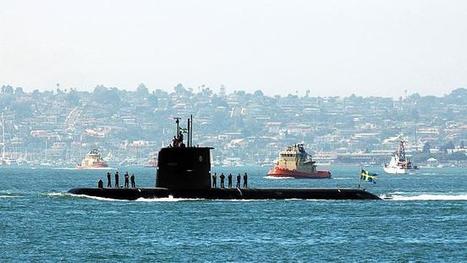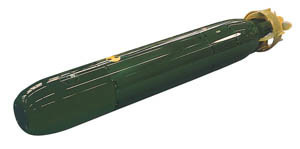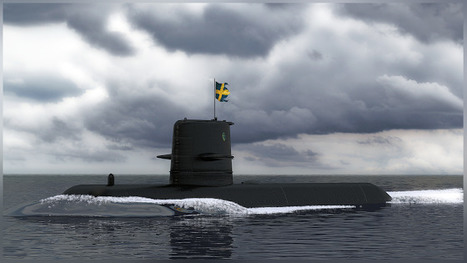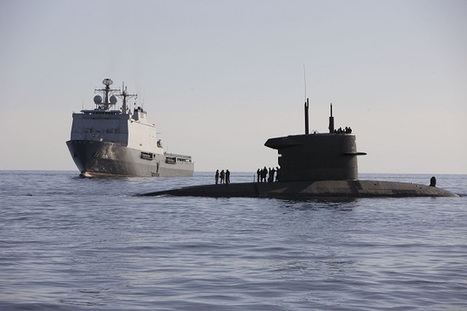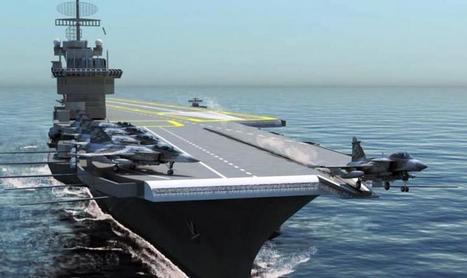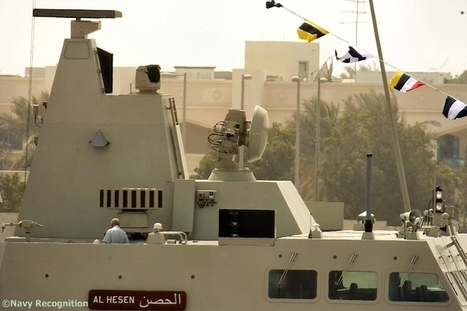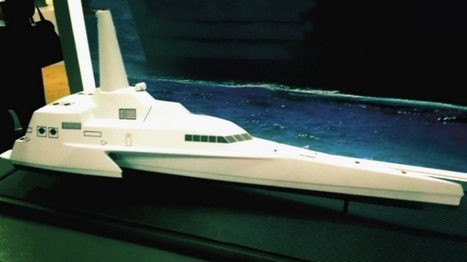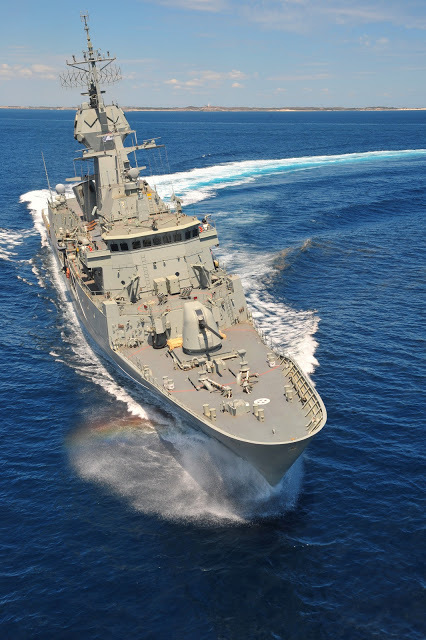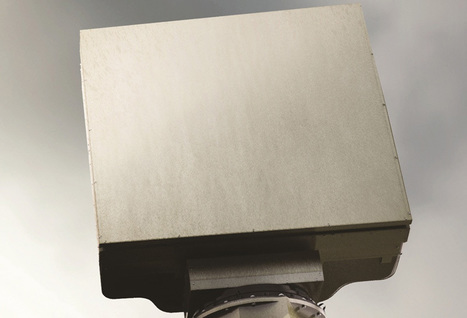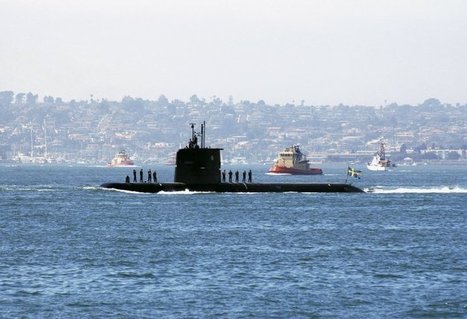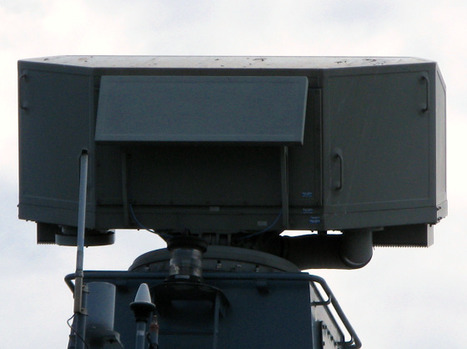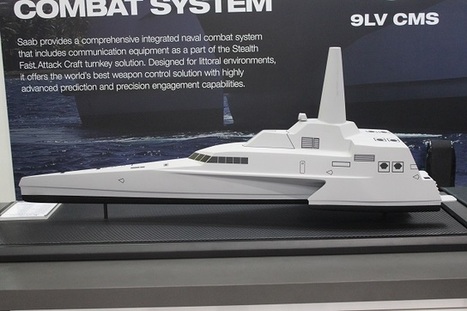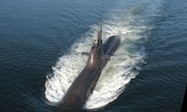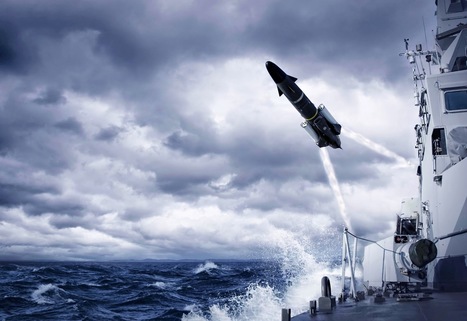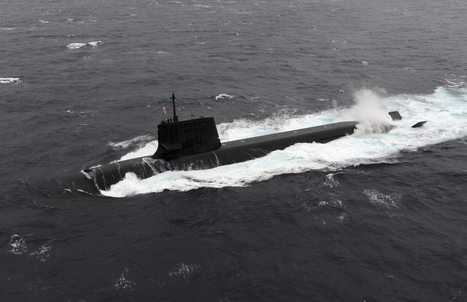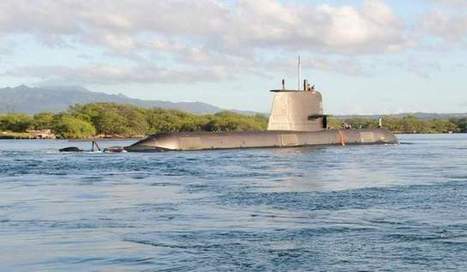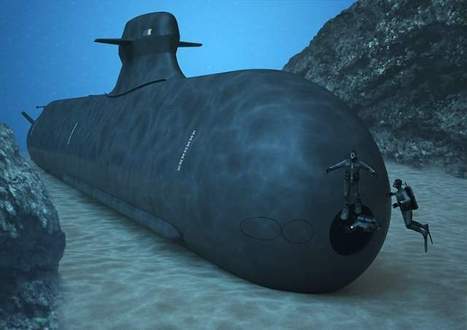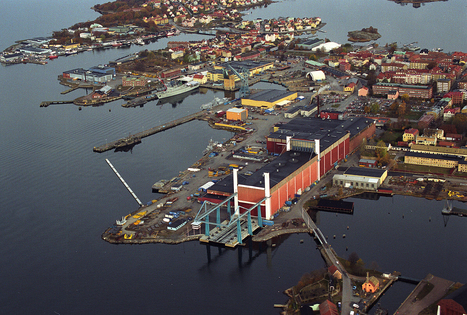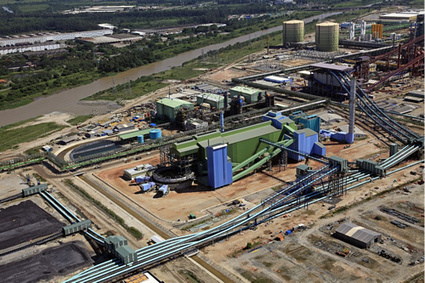 Your new post is loading...

|
Scooped by
Patrick H.
|
SwedEN has accused the Abbott government of spreading lies about its submarine building capability. The head of Sweden’s defence purchasing agency, Lena Erixon, has written to her counterpart at the Defence Materiel Organisation in Canberra, Harry Dunstall, to protest about the denigration of Sweden’s submarine industry led by Prime Minister Tony Abbott. Ms Erixon also revealed that at no stage had Australian officials requested detailed design details from Sweden or included any technical experts in various government delegations to visit the country. Mr Abbott told Parliament that only France, Germany and Japan could build the submarines. “The last Australian submarine came off the production line in about 2001 … the last Swedish submarine came off the production line in 1996, so it’s almost two decades since Sweden built a submarine,” Mr Abbott said. Ms Erixon strongly objected to that assertion saying that Sweden had maintained a “full capacity to design and build submarines both for Sweden and fore export over the last 20 years.” “To state that we would offer obsltete technology from the 1960s and 1980s is simply not true,” she said. Sweden was excluded from the process to provide Australia’s future submarine despite the fact that the navy’s existing submarine fleet is based on a Swedish design from Saab-Kockums. The $20 billion plus contest will be conducted between Japan, Germany and France. The strongly worded letter dated March 2 accesses Australia of ignoring the possibility of a low risk and low cost partnership between the two nations to build the future submarine. Ms Erixon said Sweden had delivered 11 submarines since 1996 including six completely rebuilt boats equipped with Air Independent Propulsion for the Singapore Navy. She said Sweden respected Australia’s decision but added that a new design based on Collins would “be the path of lowest cost and least risk”.

|
Scooped by
Patrick H.
|
Key Points - Saab receives SEK175 million (USD20.8 million) FMV order to develop new torpedo and to support other underwater systems
- Order placed within framework of 2014 Letter of Intent signed between Saab and the FMV
Swedish defence and security company Saab has received orders from Sweden's defence materiel administration (FMV) for continued development of the New Lightweight Torpedo (NLT) plus maintenance support for the Hydra sonar and other underwater systems, the company announced on 20 February. The order, valued at approximately SEK175 million (USD20.8 million) according to the Saab statement, has been made within the framework of a Letter of Intent (LoI) signed between Saab and the FMV on 9 June 2014.

|
Scooped by
Patrick H.
|
Defence and security company SAAB has selected a cutting-edge Kongsberg Maritime hydroacoustic package for installation on two Swedish A19 submarines. The delivery will consist of SA9510S Mine Avoidance and Navigation Sonar for submarines and the leading EM 2040 Dual RX multibeam echosounder.
The main purpose of the SA9510S sonar is to detect mines, obstacles and the sea-floor in a wide swath ahead of the submarine. The sonar generates target warnings or alarms with sufficient time available to perform an avoidance manoeuvre. It is a vital tool providing information to crew for bottom navigation purposes and for submerged navigation. The SA9510S sonar has the ability to detect and display the bottom profile in several selected horizontal directions in front of the submarine. Mine-seeking and submerged navigation can be performed simultaneously.
The EM 2040 Dual RX to be delivered is an enhanced version of the leading EM 2040 multibeam echosounder system. The EM 2040 Dual RX features two TX-Transmitters and two RX-Receivers and is designed for mapping in shallow areas at higher speed. It will provide A19 crews with accurate survey data and excellent range performance (both depth and swath width) at the highest resolution available in the market.
“With this sonar solution selected for both the Swedish submarines and Norwegian submarines, Kongsberg Maritime will have delivered active navigation sonars to the two leading submarine nations specialising in operation in shallow water,” comments Thomas Hostvedt Dahle, Product Sales Manager Naval sonars in Kongsberg Maritime. “This contract features our state-of-the-art navigation and avoidance sonar in addition to our flagship multibeam system. It strengthens Kongsberg Maritime’s position as a leading supplier of sonars with special capabilities for operation in littoral waters, whilst demonstrating the effectiveness of our standard products adapted for military operations.”

|
Scooped by
Patrick H.
|
Swedish defence and security company Saab is teaming with Dutch shipbuilder Damen Shipyards Group to explore future opportunities in the international submarine market. The companies have signed an exclusive teaming agreement to work together in pursuit of the potential Walrus-class submarine replacement programme for the Netherlands. In addition to this project, Saab and Damen will also explore ways in which they might bid jointly on other submarine procurement programmes. Through the acquisition of Kockums Saab has extensive experience in the design and manufacture of submarines and surface vessels for a global customer base, integrating advanced systems and using a range of ultra-modern materials and construction techniques. Key technology includes Saab’s unique Air Independent Propulsion System based on the Stirling engine. In addition, Saab delivers many complex defence programmes in cooperation with governmental and commercial partners in customer nations worldwide.
Damen delivers about 160 vessels annually and is known for its unique ship-design concepts, due to its sharp focus on research and development, standardisation and modularisation. Its defence and security portfolio includes vessels ranging in size from 7 m to over 200 m. Damen Schelde Naval Shipbuilding (established in 1875) supplies major surface vessels to navies worldwide.
Saab and Damen, both independently-owned companies, are confident that their combined skills, expertise and substantial R&D capacity will accelerate submarine development.
Hein van Ameijden, managing director of Damen Schelde Naval Shipbuilding, says:“we are convinced that with Saab we have found the ideal partner to realise a successor to the present Walrus class; a vessel that will set a new standard for non-nuclear submarines. The complementarity of both our companies opens up the potential for a successful cooperation in more submarine programmes worldwide.”
GunillaFransson, head of Saab business area, Security and Defence Solutions says:“Saab Kockums is looking forward to cooperating with the experienced shipbuilders at Damen Schelde Naval Shipbuilding. We have the full support of our Swedish customer in broadening our customer base to include a new demanding high-end customer.”

|
Scooped by
Patrick H.
|
Manque de moyens financiers pour lancer PRONAE L’ex-Foch de la marine française, mis en service en 1963 et transféré au Brésil en 2001, ne dispose pour l’heure que de vieux A-4 M Skyhawk datant de 1977. Des avions périmés que la marine brésilienne souhaite voir remplacés par de nouveaux appareils. La construction de nouveaux porte-avions est aussi voulue dans le cadre du projet PRONAE. Mais les problèmes économiques rencontrés par le Brésil, s’ils n’ont pas remis en cause les ambitions du pays de se doter d’une force de projection aéronavale, retardent clairement le lancement de ce programme. Du coup, en attendant d’avoir les moyens de construire de nouveaux porte-avions, le Brésil étudie la refonte du Sao Paulo. Un bâtiment aujourd'hui très ancien et qui navigue relativement peu. Le contenu de l’éventuel chantier de rénovation n’est pas connu à ce jour, aucun contrat en ce sens n’ayant encore été lancé. Mais il parait clair que les travaux tiendront compte des nouveaux avions embarqués que la marine brésilienne souhaite acquérir. Avec deux options possibles : soit conserver les deux catapultes à vapeur de 50 mètres dont est doté l’ex-Foch, soit les débarquer et intégrer éventuellement à la proue du bateau un tremplin.
Saab a dévoilé la version navalisée de son avion en 2010 Lorsque Saab a dévoilé en 2010 le Sea Gripen, version navalisée de son avion de combat, le constructeur suédois avait affirmé qu’il pouvait être développé en modes CATOBAR (Catapult Assisted Take Off Barrier Arrested Recovery) et STOBAR (Short Take Off Barrier Arrested Recovery)...
Lire l'intégralité de l'article sur Mer et Marine : http://www.meretmarine.com/fr/content/la-marine-bresilienne-etudie-la-refonte-de-lex-foch-et-sinteresse-au-gripen

|
Scooped by
Patrick H.
|
Saab has agreed a contract with Rheinmetall Waffe Munition in Germany to provide Naval Laser Warning Systems as sensors to Rheinmetall’s MASS Softkill System in a frigate upgrade program in Asia Pacific. Saab Grintek Defence has previously joined forces with Rheinmetall Waffe Munition in delivering similar systems to both the German Navy and the UAE Navy. The contract, valued at MSEK 10 (R14 million), represents a cost effective solution for both the main contractor and end user with hardware delivery expected to be completed by end 2017. An additional contract for spare parts and services is expected to follow in 2015.
“This is a significant contract for Saab Grintek Defence. The fact that the end customer has selected to have the Naval Laser Warning System aboard these vessels, emphasizes the importance modern navies are placing on laser threats, particularly in terms of littoral operations,” says Gareth Morris Senior Marketing & Sales Executive, Saab Grintek Defence.
Development and production will take place at Saab Grintek Defence in Cape Town, South Africa.

|
Scooped by
Patrick H.
|
The chief of the Indonesian Navy (Tentera Nasional Indonesia - Angkatan Laut, or TNI-AL) has confirmed that the Klewang-class stealth patrol ship programme has resumed and that the service will operate a class of at least four vessels. Admiral Marsetio, chief of staff of the TNI-AL, confirmed the plans in an interview with IHS Jane's at the Indonesian Armed Forces headquarters in Cilangkap, East Jakarta, on 14 August. The stealth trimaran programme was suspended after first-of-class KRI Klewang was gutted by fire and damaged beyond repair at a naval port in Banyuwangi, East Java, weeks after its official launch on 31 August 2012. The vessel was still undergoing sea trials. There were no casualties in that incident but Indonesia's defence ministry suspended the programme indefinitely pending further investigations into the cause of the fire. The Indonesian government has not released the results of the investigation into the fire but IHS Jane's understands that a new hull material, described by Saab as a "nanocomposite compound" that is stronger and stealthier, was chosen partly to mitigate the effects of similar calamities in the future. Besides the four confirmed boats, Adm Marsetio also indicated that the navy might consider more vessels in the near future if options presented by the shipbuilders are attractive enough. "We could be looking at a class of between 6 to 20 vessels by 2024", he said. "The final number will depend on factors such as acquisition costs and offset conditions presented by shipbuilders, but for now we are looking at a class of four ships." Peter Carlqvist, head of Saab Indonesia, confirmed to IHS Jane's on 15 August the number of vessels to be built but indicated that a contract has only been established for one ship. "We are hopeful that the contract for the other three ships will materialise very soon", said Carlqvist, who added that Saab is now the prime contractor for the programme and has received full financing from the Swedish government to fulfil the order for the four vessels. However the current vessel being built is produced in collaboration with Indonesian shipbuilder PT Lundin at its facility in Banyuwangi, East Java. The 63 m Klewang-class features a wave-piercing trimaran design that allows the vessel to cut through waves and incorporates stealth features such as reduced acoustic, infrared, and magnetic signatures. The patrol craft is propelled by four MJP 550 water jets and can reach cruise and sprint speeds of 16 kt and 35 kt respectively. The boats will be armed with four RBS15 Mk3 surface-to-surface missiles with active radar homing of up to 200 km and feature Saab's new Sea Giraffe 1X 3D compact radar, which will be mounted higher on the vessel's mast to increase coverage. The vessel's weapons and radar will be managed via Saab's 9LV Mk4 series combat management system (CMS), which incorporates the company's CEROS 200 air defence fire-control director. Carlqvist also provided design updates, which include the integration of a Bofors 40 Mk4 (BAE Systems 40 mm Mk4) naval gun under a stealth cupola and a Saab electronic support measure (ESM) system that can intercept and identify the positions of mobile phone signals and radio calls. "These will be very useful in counter piracy and illegal fishing missions where phone signals can be used as a target locator", said Carlqvist. When asked of his opinion on the TNI-AL's consideration of operating up to 20 such vessels, Carlqvist said that the figure seems reasonable given that the Indonesian Navy has plans to increase its fleet by up to 200 ships by 2024. "Some of these might include the Klewang-class given its suitability for the archipelagic nature of Indonesia's maritime territories", he said. The first Klewang-class vessel is expected to enter service by 2016.

|
Scooped by
Patrick H.
|
ADELAIDE, Australia, July 3 (UPI) --Saab's Australian subsidiary has opened an Advanced Maritime Systems Center as part of the parent company's naval systems integration program. The center opened this week is located in Adelaide in a ceremony officiated by Australian Defense Minister David Johnston. "I am very pleased to officially open the Advanced Maritime Systems Center," he said. "It has been fantastic to see the world-leading technology which Saab is developing right here in Adelaide. For example, the next generation of the Australian-developed 9LV combat management system, which has performed exceptionally as part of the anti-ship missile defense upgrade on the Navy's ANZAC-class frigates, will be developed here at this facility." More than 100 engineers, project managers and other personnel will work at the new center. The number will double by the year 2020, the company said. "We're very proud that Adelaide is now a major contributor to Saab's global combat systems integration capability," said Dean Rosenfield, managing director of Saab Australia. "In addition to being one of the leading fire control and missile integration systems centers in the world, the Advanced Maritime Systems Center will also be a development hub for other naval programs, such as the next generation of the integrated ship control management and monitoring system which Saab has developed for Australia's Collins-class submarines." Last March, Saab announced it planned to expand its naval systems business, and just recently completed negotiations to acquire new shipyards.

|
Scooped by
Patrick H.
|
ARLINGTON, Va. — The company that provides the multipurpose radar for the Austal-built Independence-class littoral combat ship (LCS) is offering a new active electronically scanned array (AESA) radar for the U.S. Navy’s future small surface combatant, one of a family of six radars developed by the company to meet the needs of surface ships. Sweden-based SAAB has invested a significant amount of its internal research and development funding to develop the AESA radars, which use gallium nitride array technology. One of the six radars is the Sea Giraffe 4A radar, an AESA version of the S-band AN/SPS-77 radar used on the Independence class. The new radar uses a 2-meter by 2-meter array. It is a rotating antenna but has a stop-and-stare capability. Like the SPS-77, the Sea Giraffe 4A would be delivered by SAAB Defense and Security LLC in Syracuse, N.Y. The radars would be built in Sweden but assembled in Syracuse using U.S. workers and shipped to the customer from there, said Erik D. Smith, vice president and general manager Saab Defense and Security. The company also would provide full logistics support for life-cycle sustainment of the radar. Sensis responded to the Navy’s request for information for technology for the future small surface combatant, a follow-on ship to the LCS. The company also considers the radar applicable to the U.S. Coast Guard’s Offshore Patrol Cutter. The Sea Giraffe 4A has been ordered by one international customer for delivery in 2016. Smith declined to identify the customer. The new radars are already developed and ready for production and governments would not need to invest in their development, Smith said. The radars use the same back-end processing equipment, but use different arrays and software according to mission requirements. SAAB’s radar family represents a different business model than the traditional industrial approach of a company responding to a requirement and then developing a solution with government funding. SAAB is able to offer a selection of six radars as fully developed items that could be installed on a wide range of platforms according to the mission capabilities desired by the customer.

|
Scooped by
Patrick H.
|
Saab has received contracts worth SEK467 million (USD70.4 million) from the Swedish Defence Materiel Administration (FMV) to generate construction and production plans for the Royal Swedish Navy's next-generation submarines and the mid-life update of two Type A 19 Gotland-class submarines. In parallel, the two the parties announced on 9 June that they had signed a letter of intent (LoI) regarding a framework to sustain the Swedish Armed Forces' underwater capability out to the mid-2020s, with potential orders valued at more than SEK11 billion. This announcement comes as Saab continues negotiations with ThyssenKrupp Industrial Solutions for the acquisition of ThyssenKrupp Marine Systems AB (TKMS AB).

|
Scooped by
Patrick H.
|
Defence and security company Saab extends its surface radar portfolio, with the introduction of five all-new complementary Giraffe radars for land and sea. This strengthens the current product offering but also takes the Giraffe firmly into the long-range air surveillance domain and puts an entirely new capability onto the market. Saab’s combat-proven and highly-regarded surface radar portfolio, including the renowned Giraffe AMB and Arthur radars, has been improved and expanded through the addition of new technologies and designs. Alongside its existing products, Saab is now producing new active electronically scanned array (AESA) radar variants for land and sea. These radars use leap-ahead design techniques that put them in a class of their own in terms of performance and capability. For the first time Saab’s Giraffe radars also offer a solution for long-range air surveillance. There is now a Giraffe option for every air surveillance and air defence application, on land and at sea. Saab has more than 30 years of AESA design experience. This depth of experience –and Saab’s understanding of radar cost, performance, reliability and packaging issues – results in a unique technology solution. Saab’s advanced surface-based radars are highly-effective against multiple ‘difficult’ air targets in the most dense and challenging operational environments. Members of Saab’s surface-based radar family for land and sea now include: Giraffe 1X and Sea Giraffe 1X: short-range radars fitted with an X-band AESA, offering a comprehensive set of 3D functions with impressive performance and flexibility. Giraffe 4A and Sea Giraffe 4A: medium- to long-range radars, combining air surveillance, air defence, sense and warn and weapon locating capabilities in a single, low-footprint S-band AESA-based unit. Giraffe 8A: a long-range S-band AESA radar, including anti-ballistic missile capability, that pushes performance and functionality to a new level. Giraffe AMB and Sea Giraffe AMB: Saab’s existing short- to medium-range surveillance radar and command and control system for ground-based air defence. These combat proven C-band systems have now been enhanced with increased range and coverage. Arthur: Saab’s combat proven C-band medium-range weapons-locating system which detects and locates enemy fire. With 80 units sold to date, the system’s performance and functionality has now been further enhanced. Saab’s In-Service Solutions is another vital part of the overall radar family product offering and is currently contracted by more than 20 customers worldwide. Saab’s radar logistics support removes 100 percent of real-life risks related to cost of ownership and has proven to deliver 98.5 percent long-term mission availability. Finally, Saab also offers a Common Radar Upgrade solution, providing upgrades to or extending the lifetime of customers’ existing (non-Saab) radar systems. Saab is one of the world’s leading radar suppliers with 60 years of experience and more than 3,000 radar systems in operation in 30 countries. Saab serves the global market with world-leading products, services and solutions ranging from military defence to civil security. Saab has operations and employees on all continents and constantly develops, adopts and improves new technology to meet customers’ changing needs.

|
Scooped by
Patrick H.
|
At DSA 2014, the 14th Defence Services Asia Exhibition and Conference currently held in Kuala Lumpur (Malaysia), Indonesian shipyard North Sea Boats (PT. Lundin) and SAAB are showing an updated model of the 63m FMPV Trimaran design ordered by the Indonesian Navy. Talking to Navy Recognition during DSA 2014, a SAAB representative explained that the Swedish company is planning to fit its new Sea Giraffe 1X 3D radar higher up in the mast for better radar coverage and less limitation because of the curvature of the Earth. This is possible because the new radar is only 150 kilograms. This explains the quite unique shape of the newly designed mast onboard the FMPV (Fast Missile Patrol Vessel) Trimaran. The mast would integrate the radar, the ESM and the communication systems.
Following the accidental destruction of the first-of-class ship KRI Klewang shortly after its launch in 2012, SAAB and North Sea Boats have now signed a partnership for the project. SAAB is planning to offer this turnkey solution to both TNI AL (Indonesian Navy) and for export under the name "Stealth FAC" (Stealth Fast Attack Craft). According to the SAAB representative, the new FMPV Trimaran would be fitted with
- 4x RBS15 Mk3 anti-ship missiles
- 1x BAE Systems 40Mk4 gun under a stealth cupola
- A stern ramp to deploy a 12 meters RIB
- SAAB's 9LV combat management system
- SAAB's Ceros 200 radar and optronic tracking system
- SAAB's TactiCall Integrated Communications System
The original class (KRI Klewang) was supposed to be fitted with mostly Chinese weapons and systems. PT Lundin representatives at DSA 2014 told Navy Recognition that officially, the Indonesian Navy is still evaluating which weapons and sensors should be fitted onboard the updated Trimaran design.
RBS15 Mk3 is a fire-and-forget, subsonic cruise type missile with all weather capability with a range in excess of 200 Km. Construction of a new 63m FMPV Trimaran started in February 2014 at the North Sea Boats facility in Indonesia. The newly designed ship should be launched 24 months from now. According to SAAB, a future version may be fitted with an anti-submarine warfare suite (weapons + sensors).
According to a BAE Systems Bofors representative at DSA 2014, this could be the first export case for the new 40Mk4 naval gun system, even though the company is in discussion with other countries as we speak.
We learned that the current order from TNI AL is for 4 vessels, but overall close to 30 units could ultimately be produced for TNI AL alone.

|
Scooped by
Patrick H.
|
SWEDISH defence giant Saab is making a bold, secret play for a slice of Australia’s $30 billion future submarine project. As Federal Government placed all options for the navy’s future submarine back on the table this week, News Corp Australia can reveal that Saab and the Swedish Government have been engaged in secret talks with the Defence Department about the design of the new boats. A Swedish delegation travelled to Canberra in March for first round talks. Sweden has along history in submarines but it moved away from the business about 15 years ago when its shipbuilder Kockums — the company that designed the Collins Class submarine — was sold to German company Thyssen Krupp MS (TKMS). The Swedish Government last month cancelled a deal with Kockums to buy its future submarine and since then it has contracted Saab to examine options for the nation’s sub-surface fleet. One option is buying the submarine builder back from TKMS and possibly expanding operations in Australia. Saab has hired almost 100 submarine experts from Kockums during the past month and its spokesman Anders Carp hinted that the hi-tech defence company could make a bid for Adelaide based submarine maker ASC if an when it came up for sale. “We are impressed with the company,” Mr Carp said. When asked if Saab might buy the company and build the Swedish submarines in Adelaide he did not rule it out and he added that 80 per cent of the company’s popular Gripen fighter jet was built elsewhere. He said discussions between Saab and Australia had involved the design of the vessel and not the combat management systems. Australia favours an American combat system. Saab already has crucial safety systems installed in the Collins Class fleet. Mr Carp said the option for an evolved Collins Class vessel would be the most cost effective solution for Australia. Saab executives met with government staffers on the sidelines of this week’s ASPI submarine conference in Canberra. Defence Minister David Johnston told the conference that all options were on the table as the government developed its first Defence White Paper for release early next year. He said the favoured option was to build the boats in Adelaide but “not at any cost”. Options also include a possible partnership with the world’s biggest and most capable diesel-electric submarines the 4200-tonne Japanese Soryu Class boat. Discussions with the Japanese are well advanced, but Senator Johnston refused to elaborate saying they were “commercial-in-confidence”. There is strong interest in the Swedish designed Stirling engine and its air independent propulsion system that allows the vessel to remain submerged for long periods of time. The biggest drawback with a diesel-electric boat compared with a nuclear vessel is the need to “snorkel” for air to feed the diesels that recharge the batteries. The advantage of conventional powered vessels is their silence and that they can operate in shallower waters than nuclear submarines.
|

|
Scooped by
Patrick H.
|
Sweden is to buy two new submarines from constructors Saab Kockums, it was announced today. The A26 subs are to be delivered by 2022 and will cost up to SEK 8.2 billion, news agency TT reports. "This is the biggest single decision when it comes to economic investments that we will make during this parliament", Defence Minister Peter Hultqvist told TT. The decision, to be formally made by the cabinet on Thursday, is to "ensure Swedish submarine capability past 2030", the minister adds. "These are the next generation of submarine. These submarines will be very hi-tech", he says.

|
Scooped by
Patrick H.
|
The Australian Submarine Corporation can take part in the tender process to build Australia’s new submarines, provided it works with an international partner. France, Germany and Japan will be invited to formally enter the contest to build Australia’s new submarines in a process which does not rule out construction in Adelaide. But culled from the shortlist is Sweden - which designed Australia’s Collins class submarines - because it has been almost two decades since the last Swedish sub rolled off a production line. Prime minister Tony Abbott said designing and building subs was about the most complex sophisticated process imaginable - akin to building the space shuttle - and just a few countries could do it. The US and UK now only build nuclear submarines, while Australia usually does not buy such equipment from Russia or China. “There’s Germany and France that are involved in a wider range of submarines and Japan which builds the best large conventional submarine in the world,” he told reporters in Adelaide. Under the process announced on Friday, France, Germany and Japan will be asked to supply designs able to meet Australia’s requirements, options for construction in Australia, overseas or both, rough costings, and their positions on issues such as intellectual property. The desired submarine will feature long range and endurance comparable to Collins but superior sensor performance and stealth. It would be equipped with the US combat system and the US Mark-48 heavyweight torpedo, as now used on the Collins. Abbott said this was a clear and defensible process to come up with some good options from which a choice could be made by year’s end. He said under any possible scenario, there would be more submarine work in Adelaide. The navy’s six Collins subs would remain in service for another two decades and they would continue to be maintained by shipbuilder ASC.

|
Scooped by
Patrick H.
|
January 20, 2015 - Defence and security company Saab and the Polish Navy have conducted a successful commissioning and sea acceptance test of the RBS15 Mk3 onboard the Orkan-class fast attack craft. The tests were part of Saab’s 2006 contract with Poland for the delivery of RBS15 Mk3 missiles, and their installation on the Orkan-class ships.
The tests, with the lead-vessel-in-class Orkan, validated all the ship’s interfaces with the necessary power, combat management and navigation systems. Testing included a simulated missile firing exercise, and concluded with sea trials when the ship carried its full complement of eight missiles. The customer has now demonstrated its ability to equip and operate these vessels with their maximum missile load. "We have successfully completed the sea acceptance tests for the first of three ships within the Polish Orkan-class. With the RBS15 Mk3, Poland now has an anti-ship missile that can defeat targets at a range of more than 200 km, in all weather conditions. It is an impressive offensive capability by any standard”, says Stefan Öberg, head of business unit Missile Systems within Saab business area Dynamics.
“Throughout all the tests, the level of co-operation with the Polish Navy and Polish industry has been excellent. This achievement is further testament to our long term commitment to the Polish Navy and local industry and we believe there will be further opportunities such as Poland’s upcoming surface vessel requirements”, says Jason Howard, head of Naval Segment CEE, Market Area Europe and Greater Middle East at Saab.
The two remaining Orkan class ships: Piorun and Grom, are scheduled to undergo similar systems tests later in 2015.

|
Scooped by
Patrick H.
|
Australia will not hold an open tender to replace its ageing Collins-class submarines, government officials said on Tuesday, a decision that bolsters Japan's position as the likely builder of the new multibillion-dollar fleet. Reuters reported in September that Australia was leaning towards buying as many as 12 off-the-shelf stealth submarines from Japan despite domestic pressure to build them at home. Since then, several European defence contractors have said they would be price-competitive with Japan and do the work in Australia in a bid to win a piece of the overall A$40 billion (RM115.8 billion) submarine programme. But the Australian government did not have time for an open bidding process, said Treasurer Joe Hockey. "We need to make decisions now and we don't have time to go through a speculation process," Hockey told the Australian Broadcasting Corporation. A spokesman for Defence Minister David Johnston said no manufacturer had been chosen. Sources have said Australia is considering a replacement for the Collins based on the 4,000-tonne Soryu-class ships built by Japan's Mitsubishi Heavy Industries and Kawasaki Heavy Industries. They have said Canberra wanted a new lithium-ion battery propulsion system, which experts say would give the submarines better underwater range and speed compared with other diesel-electric vessels that use air independent propulsion under the sea, a system which requires fuel to operate. Tokyo's next generation of Soryu submarines will be the world's first to be powered by the new technology. "Japan is the only option for Australia because neither Germany, France nor Sweden has built 4,000-tonne class diesel submarines," a former senior Japanese navy commander told Reuters. Swedish defence firm Saab, France's state-controlled naval contractor DCNS and Germany's ThyssenKrupp Marine Systems have all expressed interest in the Australian project. Saab spokesman Sebastian Carlsson said the company still wanted to do business. "We have flagged our interest and told them what we have to offer, and we want to hold discussions regarding that," he said. Prime Minister Tony Abbott, under fire after a bruising first year in office, had previously pledged the vessels would be built at the government-owned ASC shipyard in the state of South Australia. But his cabinet began back-pedalling in July, signalling cost and schedule were paramount. Since then, pressure has mounted for a competitive tender. Last week Johnston apologised after saying he would not trust ASC "to build a canoe". Australia has said it would make a final decision in a defence review expected early next year. It needs to begin replacing its Collins submarines by the mid-2030s at the latest. Such a deal for Japan would mark its re-entry into the global arms market, just months after Prime Minister Shinzo Abe ended a ban on weapons exports as part of his efforts to steer the country away from decades of pacifism. The opposition Labor Party on Monday sought to force the government to hold an open tender using a procedural motion in the upper house senate. Influential independent South Australian senator Nick Xenophon criticised the lack of a tender, saying local jobs were at stake. "This is no way to run Australia's biggest defence procurement this century," he told Reuters. – Reuters, December 2, 2014.

|
Scooped by
Patrick H.
|
EXCLUSIVE: Swedish defence giant Saab Group has launched an audacious bid to build the Australian navy’s future submarine. In a move that could mean thousands of jobs for South Australia and other states, industry sources have told News Corp Australia that Saab Group has presented a three-pronged strategy to secure the $20 billion plus Federal Government contract. It includes a lower price than its competitors and a smooth flow of Japanese submarine technology from the Soryu Class boat, because Sweden is a partner in the Japanese project. There will also be substantial technology transfer and industrial offsets for Australia, including jobs in Adelaide during the build phase, and a raft of new defence industries Saab Group recently reclaimed former Swedish submarine builder Kockums from German giant Thyssen Krupp Marine Systems (TKMS) and is moving fast to win the $20 billion plus Australian contract. A spokesman for Defence Minister David Johnston confirmed that a Swedish bid had been received. “We are aware that an unsolicited proposal was sent to Defence,” the spokesman said. The company’s global chief executive officer Hakan Buskhe will publicly launch the plan in Fremantle next Tuesday (NOV11) during the Submarine Institute of Australia’s centenary conference. Kockums was the design and build partner for the navy’s controversial Collins Class submarine and Saab Kockums wants to extend the relationship into the next generation of conventionally powered vessels. The company builds the Gotland Class submarine — the first boat in the world equipped with air independent propulsion — that is widely regarded as one of the most stealthy submarines in the world. During recent exercises with the US Navy off California HMS Gotland “sank” a nuclear powered submarine as well as the pride of the US Fleet the aircraft carrier USS Ronald Reagan. Her crew captured periscope images of the carrier to prove the “kill”. According to well-placed sources heavy lobbying and fears about an electoral backlash in South Australia have pushed the government to back away from earlier plans to simply buy the Japanese Soryu Class boat straight “off the shelf”. Both the Swedes and Germans are offering brand new vessels to meet the navy’s key requirements of size, range and stealth. News Corp Australia also understands that the government is set to launch a project definition study before the end of 2014 for the nation’s biggest defence project that includes Japanese, Swedish, German and French options. Treasurer Joe Hockey confirmed that an announcement was imminent. “We need to decide quickly and whatever we do decide will be in the best interests of the entire nation,” Mr Hockey said. It is understood that Mr Buskhe will meet with Senator Johnston next week to discuss the Saab bid.

|
Scooped by
Patrick H.
|
HELSINKI — With the clock ticking, Saab has pitched a late-hour proposal to the Australian government that could alter the outcome of that country’s submarine acquisition program, which had up to now been concentrated on bids by German and Japanese firms. Australia’s Future Submarine project remains in a state of political flux after Prime Minister Tony Abbott’s ruling Liberal Party raised the possibility of the new submarines being built outside Australia. Such a move has been criticized by opposition leaders as a significant policy re-positioning action by the government that favors Japan’s Kawasaki/Mitsubishi’s Soryu-class offering. Germany’s ThyssenKrupp is offering its Type 214 design. The Australian government has yet to confirm the exact number of submarines that will be ordered. The figure being discussed by Abbott’s Cabinet ranges from eight to 12. Saab has informed the Australian government of its “readiness and capability” to deliver the advanced made-to-order next-generation submarines it requires. Saab CEO Håkan Buskhe emphasized that while the company is not yet presenting a formal bid, it will do so if “the customer is prepared to listen to what we have to offer” and willing to open the competition to a bid from Saab. The real motivation behind Saab’s “late-hour” declaration of interest in the AUS $20 billion to $30 billion (US $18 billion to $27 billion) Australian Future Submarine project stems from Saab’s $49.6 million acquisition, completed in July, of ThyssenKrupp’s submarine shipyard assets in Sweden. These are centered around the naval vessel design and construction company ThyssenKrupp Marine Systems (TKMS, formerly Kockums). “It may seem late in the day for Saab to put a fresh offer forward, but I believe the good relations between Saab, and the history that exists between Kockums and the [Australian] Collins-class subs, validates the company’s decision to make this approach to the Australian government,” said Allan Widman, the Swedish Liberal Party’s spokesman on defense. Saab’s acquisition of TKMS, which was strongly backed by the Swedish government, was partly driven by fears that ThyssenKrupp was not alone planning to dismantle the Swedish operation’s capability to design and produce large-sized submarines, but transfer related core technologies to Germany. ThyssenKrupp, which owns German submarine maker HDW, acquired Kockums in 2005. The Swedish government’s loss of confidence in ThyssenKrupp as a long-term partner to lead the Swedish A26-class submarine program was also based on a decision by the German industrial group to downsize TKMS’s export operations and restrict the company from the freedom to independently bid on major ongoing submarine construction projects in Australia, Singapore and Norway. TKMS, which has been reorganized into Saab Kockums AB, is now on course to design and build Sweden’s new A26-class submarines and modernize part of the Royal Swedish Navy’s Gotland-class submarine fleet.
Le premier client du Saab 2000 converti en avion de patrouille maritime (MPA pour Maritime Patrol Aircraft) pourrait bien être la Grande Bretagne. C'est tout du moins ce qu'espère le constructeur suédois qui a présenté durant le salon de Farnborough un concept baptisé « Swordfish », basé sur le Saab 2000.
Le Saab 340, dont le Saab 2000 est dérivé, a déjà fait l'objet de conversion en avion de guet aérien (EriEye) ou de surveillance mairitime (MSA). Cette conversion de Saab 2000 sera cette fois spécifiquement destinée à des missions de luttes anti-navire et anti-sous-marine.
Avec le « Swordfish », dont le nom rappelle étrangement celui du célèbre bombardier-torpilleur construit par Fairey durant la seconde guerre mondiale, Saab devrait répondre à un futur appel d'offres pour le remplacement des Nimrod MR2 de la Royal Air Force, qui ont été retirés du service 2011. Ces derniers auraient dû être remplacés par le Nimrod MRA4 dont le développement été abandonné.
Sur ce même appel d'offres, Boeing espère placer son biréacteur de patrouille maritime P-8 Posedion.
Le Saab 2000 « Swordfish » devrait être assez différent de l'avion proposé par Boeing, puisqu'il sera avant tout destiné à des missions de patrouille à basse altitude, tout en étant techniquement moins complexe.
Pour l'heure, Saab reste assez flou sur les modifications qu'il serait nécessaire de faire pour transformer un Saab 2000 en « Swordfish ». Visiblement ce dernier sera notamment modifié avec une gondole ventrale contenant le radar Seaspray 7500 de Selex, et une soute à bombes.
Via Romain

|
Scooped by
Patrick H.
|
LINKOPING, Sweden, July 3 (UPI) --Sweden's Defense Materiel Administration has tapped Saab to design a new lightweight torpedo over the next year. The order is worth more than $7.1 million and is part of a letter of intent between Saab and the government on upgrading the underwater capability of the country's armed forces. "We are very pleased and proud to have the continued confidence to deliver torpedo weapon systems to FMV and the Swedish Navy in the commencement of the work to deliver the replacement for Torpedo 45," said Gorgen Johansson, senior vice president and head of Saab's Dynamics business area. Added Agneta Kammeby, vice president and head of Saab's Underwater Systems unit: "Saab Dynamics has over the years established a unique experience and expertise in developing underwater systems for shallow waters and the types of environment that exist in the Baltic Sea. Many of our systems are world leading in its segment, and with this order, we are able to maintain our global leadership position and continue to provide the market with competitive products." Additional details about the order or the envisaged torpedo were not released.

|
Scooped by
Patrick H.
|
ThyssenKrupp Industrial Solutions AG, a company of ThyssenKrupp Group, and Saab AB today entered into an agreement on the sale of Swedish shipyard ThyssenKrupp Marine Systems AB (formerly Kockums) with facilities in Malmö, Karlskrona and Muskö. The purchase price is SEK 340 million (around €37 million). The transaction is subject to the approval of the board and supervisory bodies of the ThyssenKrupp Group as well as the Swedish Competition Authority. In April 2014, the two companies signed a non-binding Memorandum of Understanding on the acquisition of the Swedish shipyard, which has generated substantial losses for years. ThyssenKrupp Industrial Solutions has been pursuing the sale in line with the Swedish government’s publicly stated preference for national naval shipbuilding programs.
ThyssenKrupp is focusing its naval shipbuilding activities in Kiel, Hamburg and Emden. These activities are highly cash generative and contribute reliably to the company’s earnings. With its proprietary air-independent HDW fuel cell propulsion system, ThyssenKrupp Marine Systems is the clear world market leader in the field of non-nuclear submarines.

|
Scooped by
Patrick H.
|
Selon le quotidien Handelsblatt, la vente des deux chantiers navals suédois de TKMS (Malmö et Karlskrona) à Saab n’est pas vue d’un bon œil à Berlin : le gouvernement allemand bloque le dénouement de ce très gros différend germano-suédois. Ces derniers mois, les Suédois avaient perdu confiance en TKMS, accusé d’avoir racheté Kockums pour mieux l’étouffer. La DGA suédoise (FMV) avait demandé à Saab de prendre en main la construction des futurs sous-marins. L’administration avait annoncé qu’elle ne commanderait plus de bâtiments aux Allemands. Finalement, TKMS baissait les bras et signait un MoU avec Saab en vue de la vente de ses chantiers. Dans la foulée, une mystérieuse descente de l’armée avait lieu le 8 avril au chantier de Malmö. Il y a deux semaines, le quotidien the Dagens Nyheter révélait l’objet de la razzia : la FMV a fait saisir certains éléments des moteurs stirling qui équipent les sous-marins (classe Gotland), par crainte de voir quelques technologies prendre le chemin de l’Allemagne. Malgré ce climat, la vente ne semble pas déplaire au patron de ThyssenKrupp, Heinrich Hiesinger, qui se bat pour remettre son conglomérat à flots, envisageant de restructurer l’activité navale. Mais c’était sans compter la méfiance du gouvernement allemand. Celui-ci craint que cette vente conduise à livrer des secrets technologiques aux Suédois, particulièrement en ce qui concerne la propulsion anaérobie par piles à combustible. Chez ThyssenKrupp, on rappelle pourtant que les Suédois travaillent sur d’autres technologies de propulsion et l’on assure qu’ils n’ont jamais eu accès aux brevets allemands. Berlin n’en doute pas moins. Selon un fonctionnaire de la défense cité par Handelsblatt, « on peut supposer que les managers suédois de ThyssenKrupp ont une bonne vue d’ensemble sur la technologie des piles à combustible ». La maison mère de TKMS négocie donc serré avec l’administration de la Défense et les politiques berlinois pour tenter de régler le plus rapidement possible une vente qui pourrait lui rapporter deux milliards d’euros. Cet argent, le géant de l’acier en a grand besoin pour assurer l’avenir de l’ensemble du groupe. D’aucuns disent d’ailleurs que la multinationale n’aurait pas seulement le désir de se débarrasser de ses chantiers suédois et que la restructuration pourrait être plus profonde que prévue. Informations qui ne sont pas passées inaperçues du côté de DCNS, qui rêve toujours d’un « EADS de la mer ». Le quotidien allemand cite même un émissaire français qui espère « avoir une nouvelle occasion de convaincre ThyssenKrupp avec notre vieille idée ».

|
Scooped by
Patrick H.
|
C’est par un communiqué succinct que ThyssenKrupp a fait savoir que des négociations avaient démarré avec le suédois Saab en vue de la vente de sa filiale suédoise Kockums (ThyssenKrupp Marine Systems AB), spécialisée dans la construction de sous-marins et subordonnée à sa division marine ThyssenKrupp Marine Systems (TKMS). ThyssenKrupp n’a pas pris cette décision par pure générosité. En fait, quelques jours auparavant, le gouvernement suédois a tout simplement annoncé qu’il n’achèterait plus de sous-marins à la filiale de TKMS. Certaines sources évoquent le fait que le conglomérat allemand n’avait plus aucun intérêt à conserver cet entité après la victoire à Singapour… ou TKMS a remporté l’appel d’offres pour la vente 6 sous-marins AIP (dont 4 en option). Car côté suédois, il était devenu clair que Kockums était menacé dans son existence par les conditions et blocages imposés par ThyssenKrupp : impossible pour l’entreprise suédoise de briguer dans de bonnes conditions des contrats à l’exportation (notamment à Singapour) ; impossible aussi, à terme, de préserver le savoir-faire suédois dans le domaine des sous-marins, nécessaire pour la sécurité du royaume étant donné les spécificités de la Baltique, redevenue hautement stratégique à cause de la Russie. L’annonce des pourparlers, concrétisée par la signature d’un Memorandum of Understanding entre les deux sociétés, présage donc d’une fin « heureuse » pour une affaire bien mal engagée tant sur le plan industriel que diplomatique. Racheté par le spécialiste allemand des sous-marins HDW (devenu depuis TKMS Kiel) en 1999, « l’alliance n’a pas débouché sur une fusion, ni un partage des activités au sein du groupe », reconnaît un syndicaliste allemand interrogé par TTU. Selon la version des autorités suédoises, et les faits ne leur donnent pas totalement tort, ThyssenKrupp n’a jamais vraiment eu l’intention de partager son savoir-faire ni de pousser les sous-marins de Kockums sur les marchés internationaux. Certains estiment que l’Allemand a tout simplement racheté le Suédois pour le neutraliser. Résultat, au fil des ans, les activités des chantiers de Malmö, Karlskrona et Muskö se sont réduites à de la maintenance, des réparations et à la production de quelques bâtiments pour la marine nationale. L’évolution des effectifs de Kockums témoigne de ce tarissement. De 1 500 salariés au tournant du siècle, ils sont passés aujourd’hui à 900 salariés plutôt sous-occupés. Face à la morosité suédoise, l’effervescence qui règne sur les chantiers allemands de Kiel tranche cruellement. TKMS Kiel affiche un carnet de commandes plein avec 23 sous-marins (bâtiments complets et « kits de montage » compris), 2 600 salariés et un besoin exprimé en personnel d’environ 300 salariés supplémentaires. Pour régler le problème, les représentants de la DGA suédoise (FMV) et sa directrice Lena Erixon se sont déplacés à plusieurs reprises à Berlin et sur la cote baltique, afin de convaincre les Allemands de revendre « leur » chantier. Sans succès. Ce qui a poussé la FMV à entrer en résistance et à abattre la carte Saab d’une manière plus qu’énergique. Face aux attaques de Saab et au durcissement de l’Etat suédois, TKMS a proposé en urgence la construction d’un sous-marin en Suède, l’A26. Le gouvernement souhaite en commander deux exemplaires, pour une entrée en service à l’horizon 2020, en parallèle avec la modernisation d’au moins deux sous-marins de classe Gotland. Tout en annonçant qu’il comptait se renforcer dans tout le secteur naval, Saab avait alors entrepris de débaucher plusieurs dizaines d’ingénieurs et de cadres de Kockums. Ces manœuvres seront suspendues le temps des négociations avec ThyssenKrupp, à en croire le communiqué commun du 14 avril. A Stockholm, les experts ne croient pas en un blocage du rachat par des autorités de la concurrence. Le risque d’achoppement viendrait plutôt du prix que demandera l’Allemand pour, de facto, autoriser la naissance d’un rival de premier ordre dans le domaine des submersibles conventionnels. Le transfert de « blocs de travail » a également été évoqué : « La question s’est révélée difficile étant donné la forte séparation de nos activités et la nécessité pour nous d’obtenir l’accord de nos clients », a expliqué Torben Beckmann, porte-parole de ThyssenKrupp, à TTU.

|
Scooped by
Patrick H.
|
STOCKHOLM, 14 avril (Reuters) - ThyssenKrupp a annoncé lundi la signature d'une lettre d'intention en vue de la vente de ses chantiers navals suédois au groupe de défense Saab . Après un différend commercial, le gouvernement suédois a exclu cette année de passer de nouvelles commandes de sous-marins au groupe allemand, préférant se tourner vers Saab pour sa stratégie future. Saab a indiqué que le rachat de ThyssenKrupp Marine Systems lui permettrait de développer ses activités navales et aiderait la Suède à atteindre ses objectifs en matière de conception, de production et d'entretien de ses sous-marins et bâtiments de guerre. ThyssenKrupp Marine emploie environ un millier de personnes en Suède, principalement à Malmö et Karlskrona dans le sud du pays. La filiale a réalisé un chiffre d'affaires de 1,9 milliard de couronnes (210 millions d'euros) lors de l'exercice fiscal 2011/2012, selon ses comptes annuels publiés en Suède. Saab est détenu à 30% par la firme d'investissement suédoise Investor. (Mia Shanley, Véronique Tison pour le service français)
|



 Your new post is loading...
Your new post is loading...

